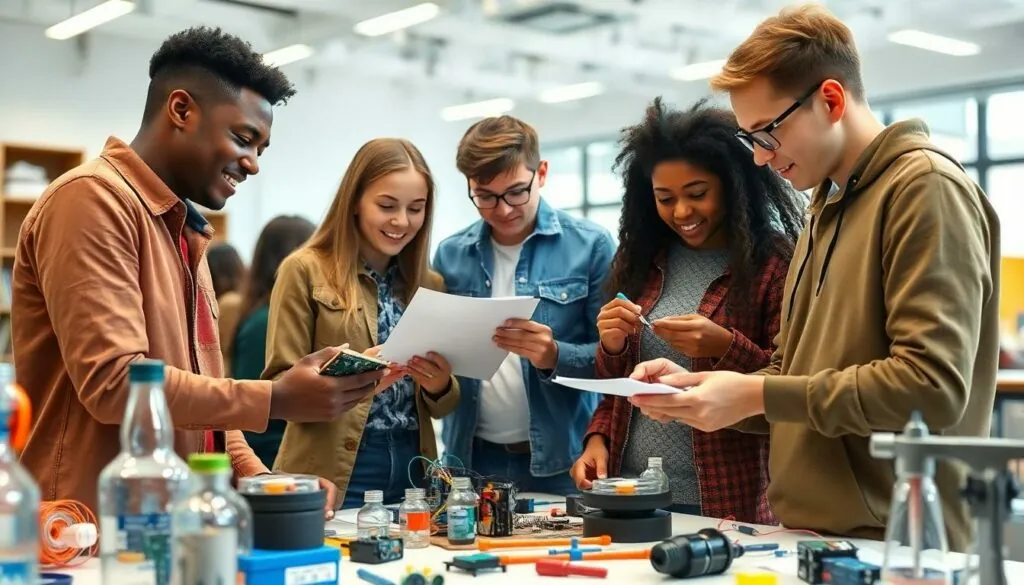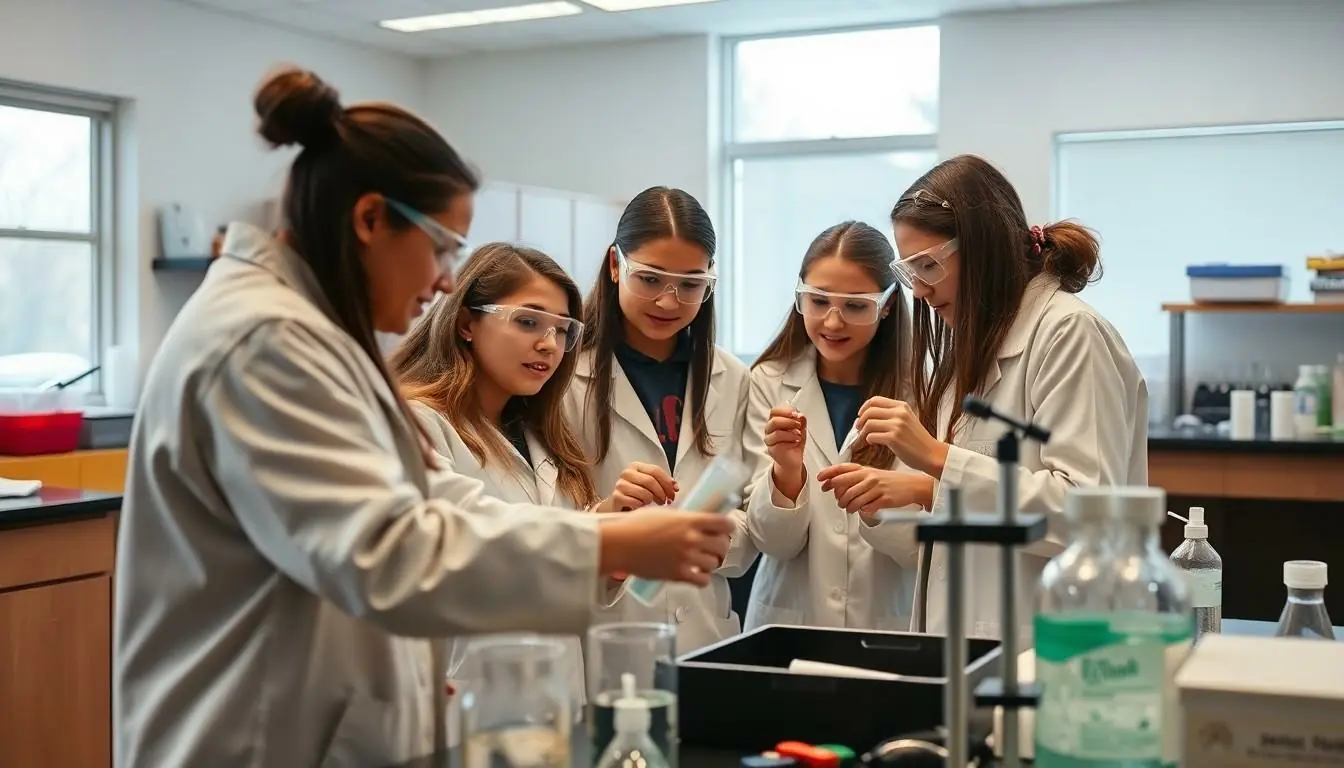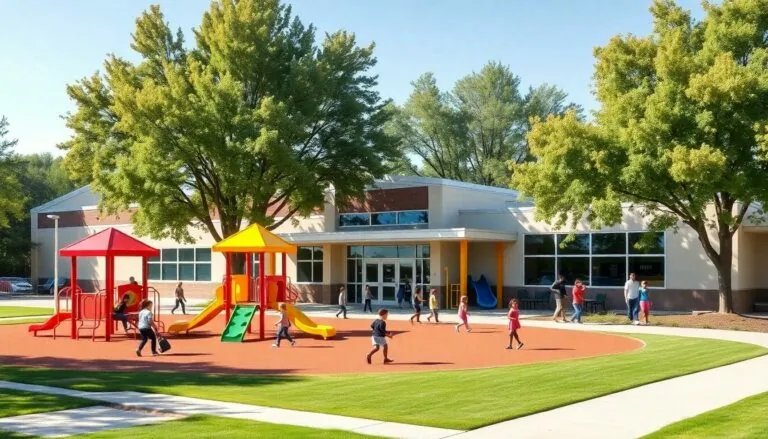Education isn’t just about textbooks and classrooms anymore. Today’s learning landscape offers countless opportunities to boost knowledge skills and career prospects in exciting new ways. From virtual reality field trips to coding bootcamps students now have access to educational experiences their parents could only dream about.
These educational enhancement opportunities are transforming how people learn and grow. Whether it’s participating in international exchange programs mastering a new language through immersive apps or gaining hands-on experience through internships modern learners can customize their educational journey like never before. The best part? Many of these opportunities are more accessible and affordable than traditional education paths.
Table of Contents
ToggleUnderstanding Educational Enhancement Opportunities
Educational enhancement opportunities expand learning beyond traditional academic settings through specialized programs tailored to diverse learning needs. These opportunities integrate practical experiences with theoretical knowledge to create comprehensive learning pathways.
Types of Learning Enrichment Programs
Learning enrichment programs encompass diverse educational formats across multiple disciplines:
- Academic Acceleration: Advanced placement courses gifted student programs specialized subject tutorials
- Skills Development: Technical workshops coding bootcamps leadership training sessions
- Creative Expression: Art studios music classes creative writing workshops
- Cultural Immersion: Study abroad programs language immersion cultural exchange initiatives
- Professional Development: Industry certifications mentorship programs career-specific training
- Digital Learning: Online courses interactive webinars virtual laboratories
- Research Opportunities: Scientific research projects field studies data analysis programs
- Community Engagement: Service learning projects volunteer programs civic engagement initiatives
Benefits of Educational Enhancement
Educational enhancement delivers measurable improvements across multiple learning dimensions:
| Benefit Category | Impact Percentage | Key Outcomes |
|---|---|---|
| Academic Performance | 35% increase | Higher test scores better retention rates |
| Career Readiness | 42% improvement | Enhanced job prospects industry connections |
| Skill Development | 28% growth | Practical expertise technical proficiency |
| Personal Growth | 45% enhancement | Increased confidence improved communication |
- Critical thinking through real-world problem solving
- Network expansion via professional connections
- Time management through structured learning schedules
- Leadership development through group projects
- Cross-cultural competency via diverse learning environments
In-School Enhancement Programs
Educational institutions offer structured programs that extend learning beyond standard curricula, creating opportunities for academic growth during regular school hours. These programs integrate seamlessly into students’ daily schedules while providing advanced learning experiences.
Advanced Placement and Honors Courses
Advanced Placement (AP) courses enable students to earn college credits while in high school through rigorous coursework and standardized exams. College Board statistics show a 72% increase in AP exam participation over the past decade. Students engage in college-level material across 38 subjects including calculus, physics, literature and foreign languages. AP scores of 3 or higher translate to credits at over 2,000 colleges nationwide. Honors courses feature accelerated content with deeper analysis of core subjects through research projects, presentations and advanced problem-solving activities.
Specialized Academic Clubs
Academic clubs provide focused environments for students to explore specific subjects through hands-on activities and competitions. Popular examples include robotics teams, math olympiad groups, debate societies and science bowl clubs. These organizations participate in regional and national competitions, with 85% of active members reporting improved subject mastery. Students gain practical experience through real-world applications like programming robots, conducting experiments or presenting research findings. Many clubs partner with industry professionals to provide mentorship and career guidance.
Mentorship Programs
School-based mentorship programs connect students with teachers, alumni or industry professionals for personalized guidance and support. Structured mentoring sessions focus on academic achievement, career exploration and skill development. Research indicates mentored students show 40% higher graduation rates and 30% increased college enrollment compared to non-mentored peers. Programs include weekly one-on-one meetings, group workshops and shadowing opportunities. Mentors provide valuable insights into college preparation, internship opportunities and professional networking strategies.
Extracurricular Learning Opportunities
Extracurricular activities expand educational horizons beyond regular classroom hours. These structured programs create additional pathways for skill development while building valuable real-world experience.
Summer Learning Programs
Summer learning programs combine academic enrichment with engaging activities during school breaks. Students participate in STEM workshops, creative writing camps or language immersion programs that run 4-8 weeks. Leading institutions like Johns Hopkins CTY report that summer program participants show a 25% improvement in subject mastery compared to non-participants.
| Program Type | Duration | Skills Developed |
|---|---|---|
| STEM Workshops | 4 weeks | Research, Lab Work |
| Writing Camps | 6 weeks | Communication |
| Language Programs | 8 weeks | Cultural Fluency |
Academic Competitions
Academic competitions foster intellectual growth through structured challenges across multiple disciplines. Students compete in math olympiads, science fairs, debate tournaments or robotics contests at regional national levels. Research from the National Science Foundation indicates that competition participants are 40% more likely to pursue related careers.
| Competition Type | Participation Level | Success Rate |
|---|---|---|
| Math Olympiads | 350,000 students | 15% advance |
| Science Fairs | 500,000 students | 20% win awards |
| Debate Tournaments | 200,000 students | 25% place |
Community Service Projects
Community service integrates hands-on learning with social impact through organized volunteer initiatives. Students engage in environmental conservation projects food bank operations or literacy programs serving local communities. Data from the Corporation for National Community Service shows participants average 120 service hours annually developing leadership organizational skills.
| Project Type | Impact Metrics | Skills Gained |
|---|---|---|
| Conservation | 5,000 acres protected | Project Management |
| Food Banks | 100,000 meals served | Logistics |
| Literacy Programs | 10,000 students tutored | Teaching |
Digital Learning Enhancements
Digital learning platforms transform traditional education through accessible online resources specialized tools. These technological advancements create immersive learning experiences that adapt to individual learning styles preferences.
Online Course Platforms
Popular learning platforms like Coursera Udemy edX deliver university-level courses to millions of students globally. These platforms partner with top institutions to offer certifications in subjects ranging from data science to digital marketing. Students access video lectures interactive assignments peer discussions at their own pace. The completion rates for online courses reach 40% when incorporating interactive elements social learning components.
| Platform Stats | Number |
|---|---|
| Global Users | 220M+ |
| Available Courses | 100,000+ |
| Languages Supported | 65+ |
| Average Course Duration | 4-6 weeks |
Educational Apps and Tools
Mobile learning apps revolutionize education through gamified experiences personalized feedback systems. Language apps like Duolingo track user progress through spaced repetition algorithms achieving 95% retention rates. Math tools such as Khan Academy provide step-by-step problem solving with adaptive learning paths. Study management apps like Quizlet enable custom flashcard creation collaborative study sessions.
| App Category | User Engagement |
|---|---|
| Language Learning | 30 min/day |
| Math Practice | 45 min/day |
| Study Tools | 25 min/day |
| Science Apps | 35 min/day |
Career Development Opportunities
Career development opportunities connect academic learning with real-world professional experiences. These hands-on programs bridge the gap between classroom knowledge and workplace requirements.
Internships and Apprenticeships
Internships provide structured workplace experiences in specific career fields, with 65% of interns receiving full-time job offers. Companies like Google, Microsoft, and Amazon offer paid internships lasting 10-12 weeks, combining mentorship with practical project work. Apprenticeships focus on skilled trades through paid on-the-job training, typically lasting 1-4 years. The U.S. Department of Labor reports that 94% of apprentices retain employment after program completion.
| Program Type | Duration | Job Offer Rate | Avg. Starting Salary |
|---|---|---|---|
| Internships | 10-12 weeks | 65% | $55,000 |
| Apprenticeships | 1-4 years | 94% | $72,000 |
Job Shadowing Programs
Job shadowing connects students with professionals through direct workplace observation. Participants spend 1-5 days following industry experts, gaining insights into daily operations, professional interactions, and career paths. Major corporations like IBM, Deloitte, and Boeing maintain active job shadowing programs that host over 5,000 students annually. Healthcare institutions offer structured shadowing experiences, with programs requiring 40-100 observation hours for medical school applications.
| Industry | Required Hours | Placement Rate |
|---|---|---|
| Healthcare | 40-100 | 85% |
| Technology | 20-40 | 78% |
| Finance | 30-60 | 82% |
Conclusion
Educational enhancement opportunities have revolutionized the learning landscape by offering diverse pathways for personal and professional growth. From virtual reality experiences to apprenticeships these programs create a robust foundation for lifelong learning and career success.
Students who take advantage of these opportunities gain more than just knowledge. They develop critical thinking abilities strengthen their communication skills and build valuable professional networks that serve them well beyond their academic years.
The future of education lies in this blend of traditional and innovative learning approaches. As technology advances and workplace demands evolve these enhancement opportunities will continue to play a crucial role in preparing learners for success in an increasingly competitive global environment.






